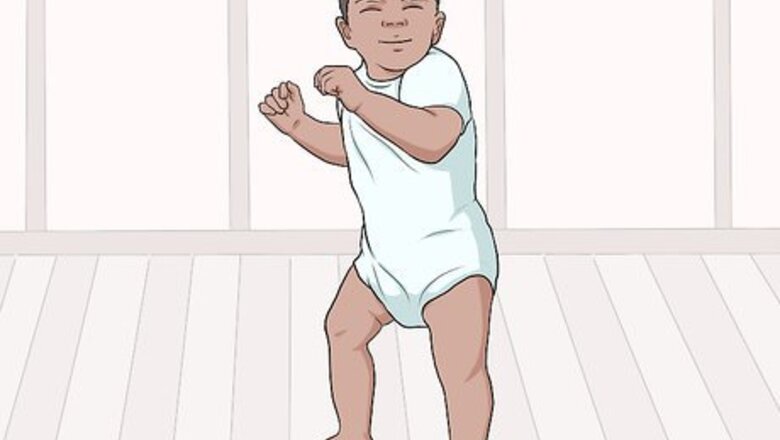
views
Transitioning Your Toddler from Bare Feet to Shoes
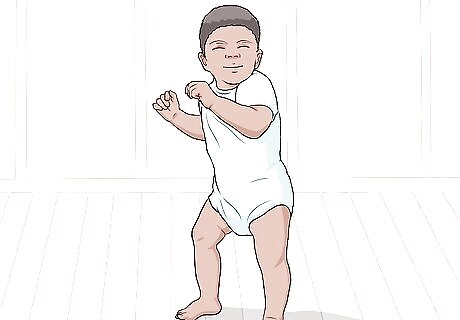
Allow your toddler to go shoeless while they are learning to walk. Although you might be ready for your toddler to start wearing shoes whenever you go out, they might not be ready for them. Toddlers learn to walk best when their feet are bare because this helps them to feel the ground and develop the muscles in their feet. If your toddler has just started walking, let them go barefoot indoors as often as possible. Check to ensure that the areas your toddler likes to walk around in are clean and free from hazards. Sweep or vacuum the floor every couple of days to keep the floor clean.
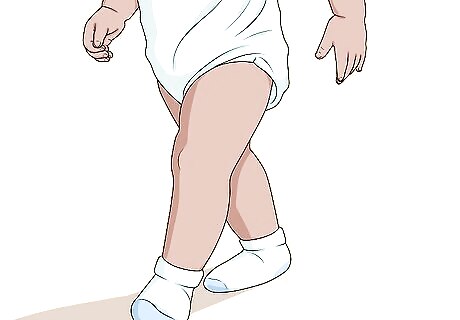
Put thick socks on your toddler when they walk around indoors. You could also try putting a thick pair of socks on your toddler as a transition to shoes. This might help them to feel more comfortable with the sensation of having something on their feet. Make sure that the socks have grippy bottoms to help prevent slips on hard flooring. Don’t allow your toddler to walk outside in thick socks as these will not protect their feet from things like sharp items or moisture.

Have your toddler fitted for shoes once they start walking more. When your toddler is walking well on their own and you think they are ready to start walking outdoors, then you can start buying them shoes. Make sure that you get shoes in the right size for your toddler so that they will be comfortable. The best way to do this is to have your toddler’s feet measured in a shoe store.Tip: Keep in mind that toddlers grow quickly and so do their feet! Your toddler will likely need a new shoe size every 2 to 4 months.

Opt for soft-soled shoes so your toddler can still feel the ground. If your child is resistant to wearing shoes, try building up to them slowly. Start by encouraging your child to wear soft-soled shoes or slippers around the house while they're playing. Start with lightweight slippers that the child will barely notice on their feet. Encourage them to wear these for 1 hour, then 2 hours and so on. Once your toddler gets used to the feeling of their feet being covered up, repeat the process again, but this time with shoes.
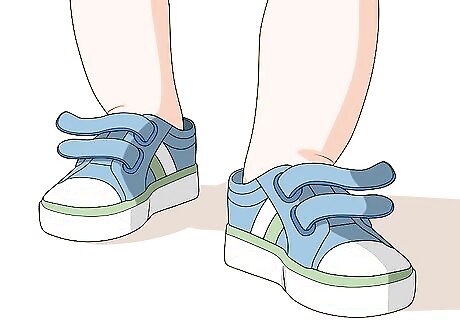
Make sure that the shoes are big enough, but won’t slip off easily. It's important that the shoes are big enough for your toddler, otherwise they might find them uncomfortable and not want to walk in them. Since your toddler’s feet will grow quickly, it’s better to get shoes that are slightly too big than ones that are snug. However, it’s common for toddlers to try to take off their shoes after you get them on, so find a pair that your toddler cannot easily remove. When your toddler tries a pair on, you should be able to fit your index finger between their heel and the back of the shoe. If you can't, the shoes are probably too small. You should also check the width off the shoe. If the shoe is wide enough, you should be able to get it on your toddler's foot without too much effort or resistance. Look for shoes with strong Velcro or laces to ensure that they will stay put on your toddler’s feet.
Encouraging Your Toddler to Wear Shoes

Explain the importance of wearing shoes to your toddler. It's a good idea to take the time to explain to your toddler why they need to wear shoes, such as by clarifying that shoes protect their feet and keep them clean. Tell them that they’re likely to hurt their toes or feet if they walk around in bare feet all the time, or that their feet will get dirty if they walk around outside with no shoes on. Try saying something like, “If you don’t wear shoes when you walk outside, you might step on something sharp and hurt your feet.” Or, you might say, “It’s really cold outside! You’ll need your shoes to keep your feet warm.”
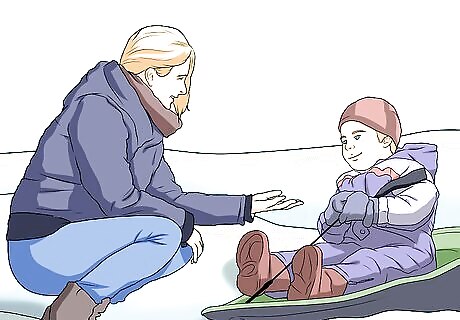
Praise your toddler when they wear their shoes. Present shoe wearing as a big event in the child's life. Tell them it is something they should be proud of since they are taking good care of their feet. Your child will be much more inclined to wear the shoes if they see them as a fun, positive thing that earns them praise. Try saying something like, “Wow! You look so grown up in your big kid shoes!” Or, you could say, “Great job wearing your shoes today, buddy!”
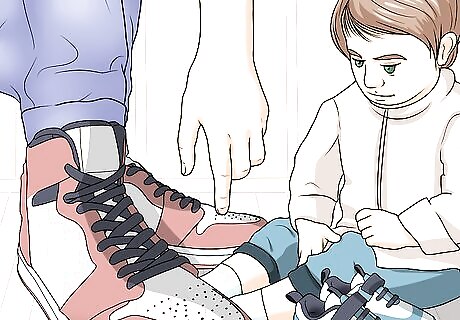
Show your child that wearing shoes is good by wearing them yourself. If your child sees you walking around with no shoes on, they'll want to do the same. Set a good example by always wearing your shoes, especially outdoors. Point out your shoes to your toddler before you help them put on their shoes. Explain that the same rules apply to everyone. Try saying something like, “If mommy’s wearing shoes, you need to wear them, too.” Tip: You should also enforce this rule for any older siblings. Make sure to point out that your child’s siblings are wearing shoes, too.
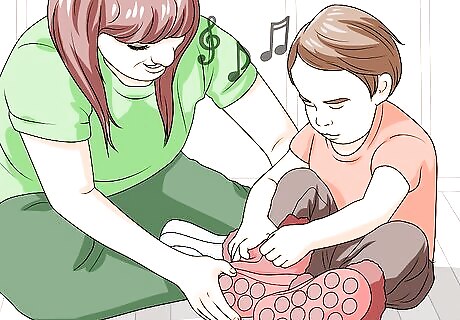
Distract your toddler while you put their shoes on if they get fussy. If your toddler tends to throw a tantrum when you put their shoes on them, get in the habit of distracting them. Sing your toddler a song, give them a favorite toy to play with, or just make silly faces and talk to them while you put on their shoes. Try to make getting their shoes on into a fun experience so they won’t dread it. If your toddler does throw a tantrum about putting on shoes, don’t show that it bothers you. If you have someone around to help you, then you might also ask them to help you distract your toddler.

Set firm rules about wearing shoes and enforce them. Once your child grows somewhat used to the shoes, you should set some firm ground rules. Tell your child that you expect them to keep their shoes on in certain situations, like when they go to the park, to the mall or for a walk outside. If the child complains and attempts to remove their shoes during an outing, try saying something like, “Big kids have to wear their shoes so they can go out and do fun things.” Or, you might say, “If you take off your shoes, we can’t go to the playground.” When you're out at the playground or supermarket, point to other children who are wearing their shoes and say something like "Look at that good girl over there wearing her shoes!"
Buying Shoes for Your Toddler
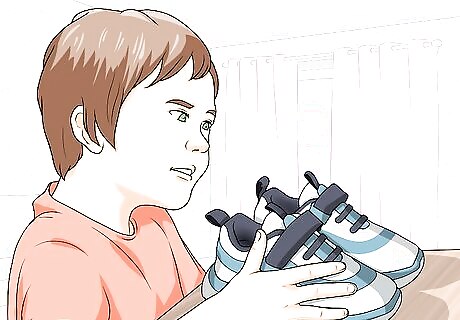
Allow your child to have a say in choosing their own shoes. Giving your child the opportunity to choose their own shoes (within reason) can help to make them a little more enthusiastic about wearing them. Your child might also be more easily convinced to wear the shoes if they are brightly colored, have flashing lights or feature the child's favorite cartoon character.Tip: You might also encourage your toddler to choose shoes that are easy to put on and take off, such as slip-on shoes or shoes with Velcro straps. This way, they can help to put on and take off their own shoes, which might be encouraging for them.
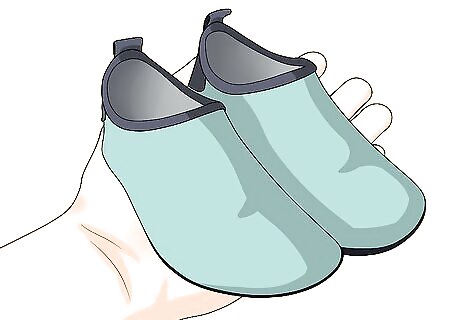
Choose lightweight shoes to help your toddler feel more comfortable. A lot of times, toddlers will refuse to wear shoes because they find them heavy and uncomfortable. Therefore, choosing lightweight, comfortable shoes made from a soft material, such as cloth or canvas, is your best option. Heavy, thick-soled shoes can prevent the child from moving normally. Opt for shoes with flexible soles.
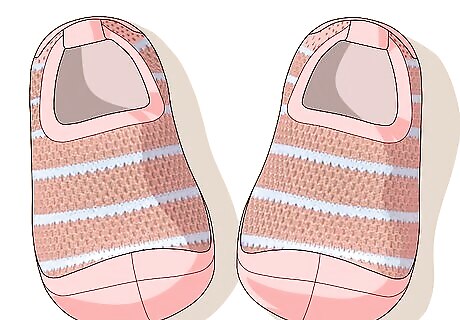
Get cool, breathable shoes for your toddler when the weather is warm. Look for shoes made from materials that breathe easily, such as cloth and mesh. Avoid shoes made from synthetic materials, such as plastic, or heavy materials, such as leather. These will make your toddler's feet feel hot and make them uncomfortable. Avoid flip-flops, sandals, and Crocs since these don't provide enough stability for a toddler's feet. They may also encourage toe-gripping, which could lead to foot deformities.
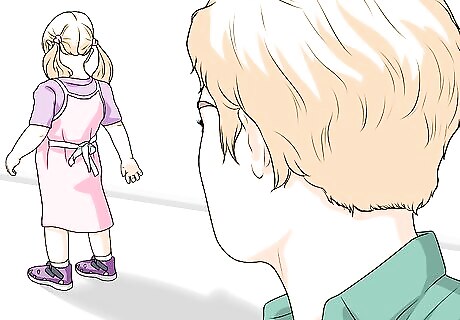
Observe your child walking in the shoes. Try the shoes on in the store and observe your child as they walk. They should be able to move naturally without stumbling or shuffling. Of course, new shoes always take a bit of getting used to, so if your toddler's walking is just a little exaggerated there's no need to worry. Once you remove the shoes, check your child's feet for any marks, as this could indicate that the shoe was pinching their foot and is too small.




















Comments
0 comment